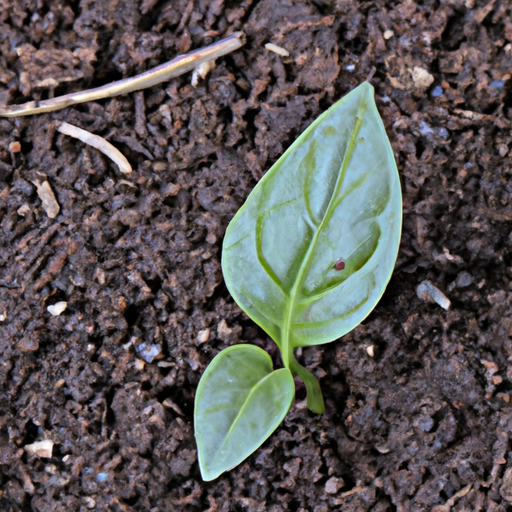Urban Food Production: Growing Your Own Food in the City
Hey there, folks! As a city dweller, you may think that growing your own food is a pipe dream. However, urban food production is a trend that is gaining popularity and can offer numerous benefits. In simple terms, urban food production refers to the ability to grow food in a city or urban setting.
The benefits of urban food production are many. For starters, growing your own food can save you money, improve your diet and reduce your carbon footprint by reducing the need for food transportation. Additionally, growing food in urban settings can help mitigate the effects of climate change by reducing the amount of heat absorbed by cities and by absorbing carbon dioxide from the atmosphere.
The Biggest Obstacle to Urban Food Production
So, here’s the deal. When it comes to urban food production, the biggest obstacle is the lack of space. Cities are becoming more and more congested, and there seems to be little room for any new infrastructure, let alone food production. Not only that, but the cost of setting up an urban farm can be astronomical, which makes it difficult for many people to even consider.
Another significant challenge is the quality of the soil. Most cities are built on reclaimed land, which means the soil is often contaminated with pollutants like heavy metals, pesticides, and other harmful chemicals. This can make it extremely difficult to grow healthy crops and can be harmful to the people who consume them.
In addition to the lack of space and soil quality issues, there are also challenges with water access. Water can be expensive and scarce in urban areas, which makes it difficult to maintain a steady supply for crops. Pests can also be a significant problem in a city environment, as they thrive in areas with a high concentration of people and food sources.

Lastly, there is a need for education and resources to help urban farmers overcome these challenges. Many people do not know where to start when it comes to urban farming, and there is a lack of knowledge on the best practices for dealing with the unique challenges of growing food in a city environment.
Overall, the biggest obstacle to urban food production is the lack of space and infrastructure, as well as issues with soil quality, water access, pest control, and education. These challenges can be overcome, but it will require a concerted effort from all stakeholders to make it happen.
Urban Food Production: Overcoming Challenges
After examining the biggest obstacles to urban food production, it is clear that the challenges are many and varied. However, the potential benefits are worth the effort.
To overcome the obstacle of limited space, we can look at vertical gardening, container gardening, and rooftop gardens. These methods require less land and can make use of unused spaces.
Costs can be reduced by using repurposed materials, and education and resources can make a big difference in reducing the costs of infrastructure and soil quality improvements.
Access to water can be challenging, but there are solutions such as rain harvesting, drip irrigation, and hydroponic systems. Pest control can be addressed through the use of natural predators and companion planting.
We also need to prioritize education and resources to help urban farmers overcome these challenges. We must work together to support local food systems and encourage sustainable food production practices.
In conclusion, while the challenges of urban food production are significant, we can get past them through innovative solutions, cooperation, and a willingness to learn and adapt. The benefits of urban food production are substantial, including improved food security and access to fresh, healthy produce for all.
Urban Food Production FAQ
What are the advantages of urban farming in Zimbabwe?
Well, in my opinion, the biggest obstacle to urban food production is the lack of suitable land and space in cities. Most urban areas are already crowded, and homeowners rarely have access to enough land to cultivate crops and raise livestock on a large scale. Furthermore, urban areas may lack sufficient topsoil, which is fundamental to the germination of many crops. Additionally, there may be a shortage of water resources in some areas, which makes it difficult to irrigate crops properly. Unfavorable weather conditions and lack of technical knowledge also pose a great challenge to urban food production.On a different note, urban farming has several benefits in Zimbabwe. One significant advantage of urban farming is the reduction of food insecurity. It provides fresh, nutritious food for the families, which is not expensive, unlike buying from the market. It also yields a considerable amount of food in a small area, which can help people to become more self-sufficient. Furthermore, urban farming in Zimbabwe creates job opportunities and generates income for many families. It can also help to reduce the carbon footprint, reduce pollution and improve the quality of life in urban areas. Overall, urban farming in Zimbabwe can make a significant contribution to food security, environmental sustainability, and economic development.
what is the biggest obstacle to urban food production?
Honestly, in my experience, the biggest challenge to urban food production is the lack of space. Urban areas are dense with buildings, roads, and people, leaving little room for agricultural pursuits. This means that urban farmers have to get creative with their use of space, often resorting to container gardening on rooftops or in small plots between buildings. It can also be difficult to find affordable land to use for farming, as urban real estate is highly valued and usually used for other purposes. Despite these challenges, there are a variety of methods that urban farmers can use to maximize their space and grow food in even the smallest of areas. For example, vertical gardening and hydroponics allow for crops to be grown indoors or vertically, saving valuable horizontal space.